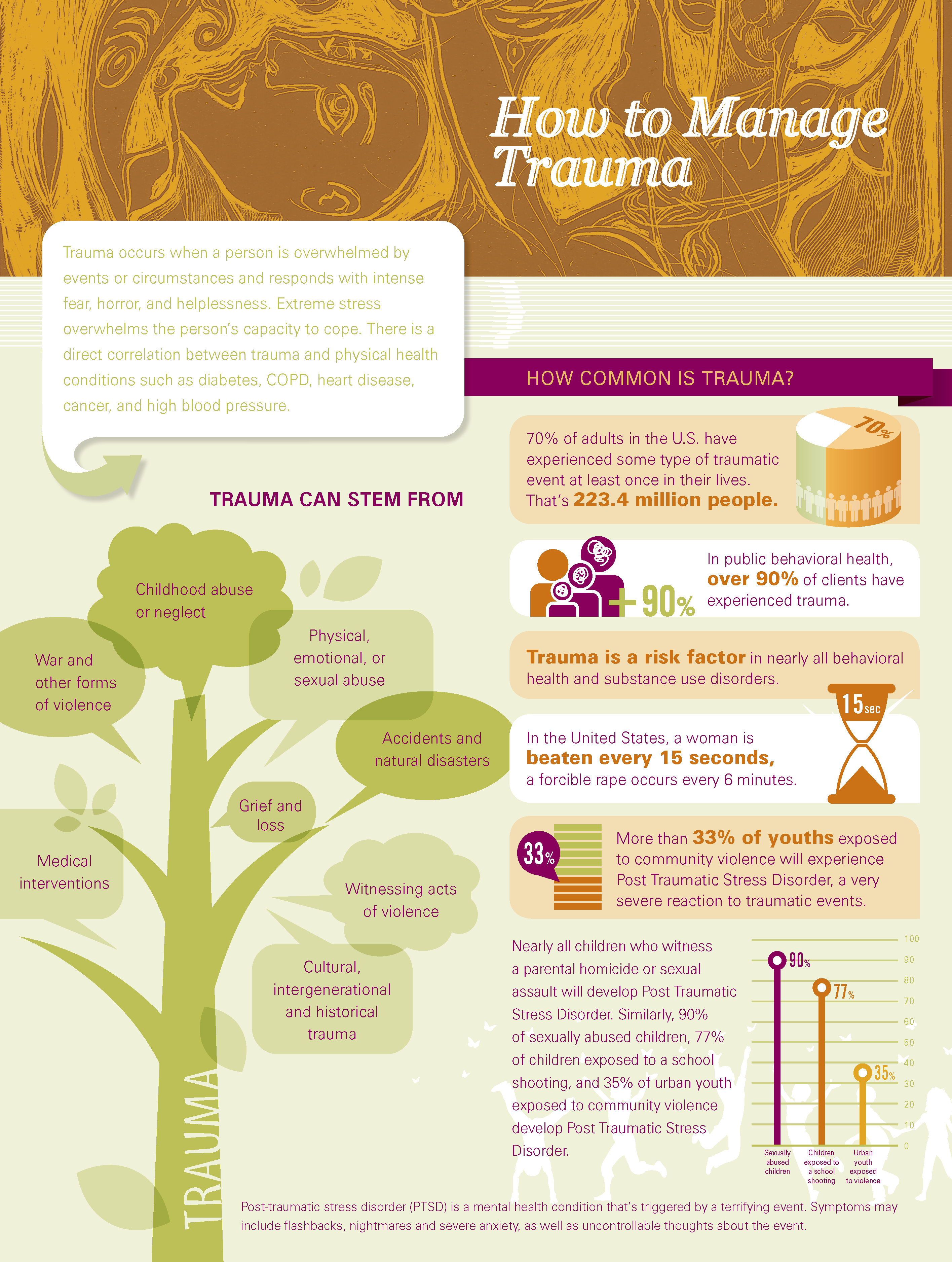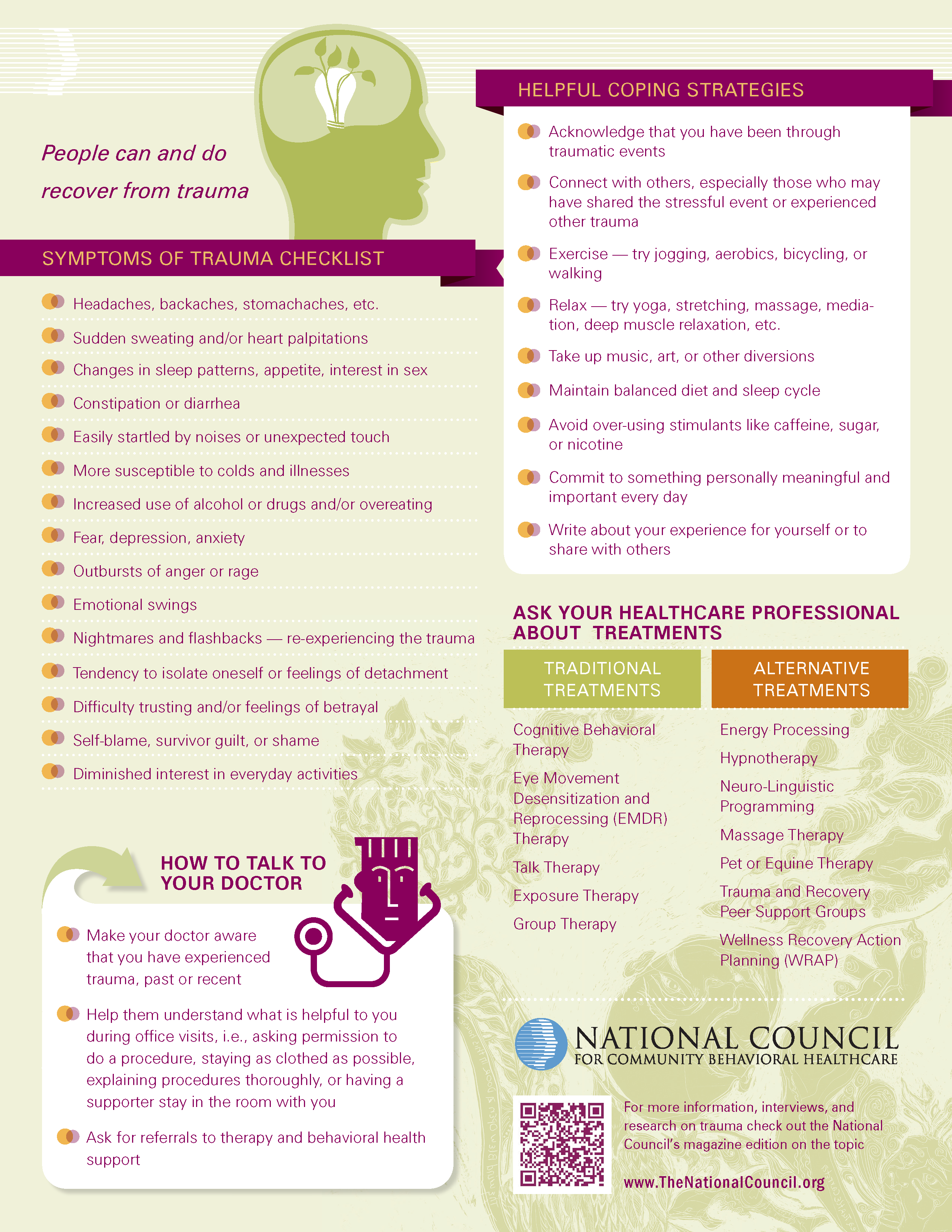The National Council for Behavioral Health is an organization that represents U.S. community mental health and substance use organizations. This infographic is a very important resource for service providers supporting people who are experiencing homelessness. The information in this infographic is based on research from the United States, however there are several points that can be applied within the Canadian context. They are as follows:
- Trauma is a risk factor in almost all behavioural health and substance use disorders (90%).
- Almost all children who witness a parent’s homicide or sexual assault develop Post Traumatic Stress Disorder (PTSD).
- A high % of youth exposed to violence or sexual assault in their homes, schools or the community also develop PTSD.
- 70% of adults in the U.S. have experienced a traumatic event, though not all develop PTSD.

There are two overarching connections that I can see right away between trauma and homelessness. The first, is that people may be experiencing symptoms of trauma that act as a pathway to their experience of homelessness. Some of these symptoms include isolation and detachment, fear, depression and anxiety, as well as increased use of alcohol or drugs. This is particularly clear when we look at a specific group like army veterans who are disproportionately more likely to experience homelessness. This is also true of people who have been victims of sexual violence as well as other forms of violence. Experiences of traumatic events from a young age can also be a factor.
The second connection is that events that cause trauma, such as violence and sexual assault, are more likely to occur when people don’t have access to safe housing. Exposure to traumatic experiences may make homelessness harder to overcome, forcing the person to mediate their experiences without the necessary support.
It is important that trauma counselling services are available for both youth and adults who are experiencing homelessness. Some of the treatments from trauma are included in this infographic: Cognitive Behavioral Therapy, Talk Therapy, Exposure Therapy and Group Therapy. Where possible, it is helpful when clients have a choice to participate in something that they are comfortable with.
Within the service sector, staff should be trained on what to do when someone discloses traumatic experiences. It is necessary to have contingencies and resources available for staff, because these things will inevitably come up.
Finally, staff are not immune from trauma. Events experienced within the service sector can be highly traumatic. The staff that I have spoken to at different agencies are highly committed to the populations that they work with. It is important that they have access to employee assistance programs and other forms of trauma counselling for their own well-being.


